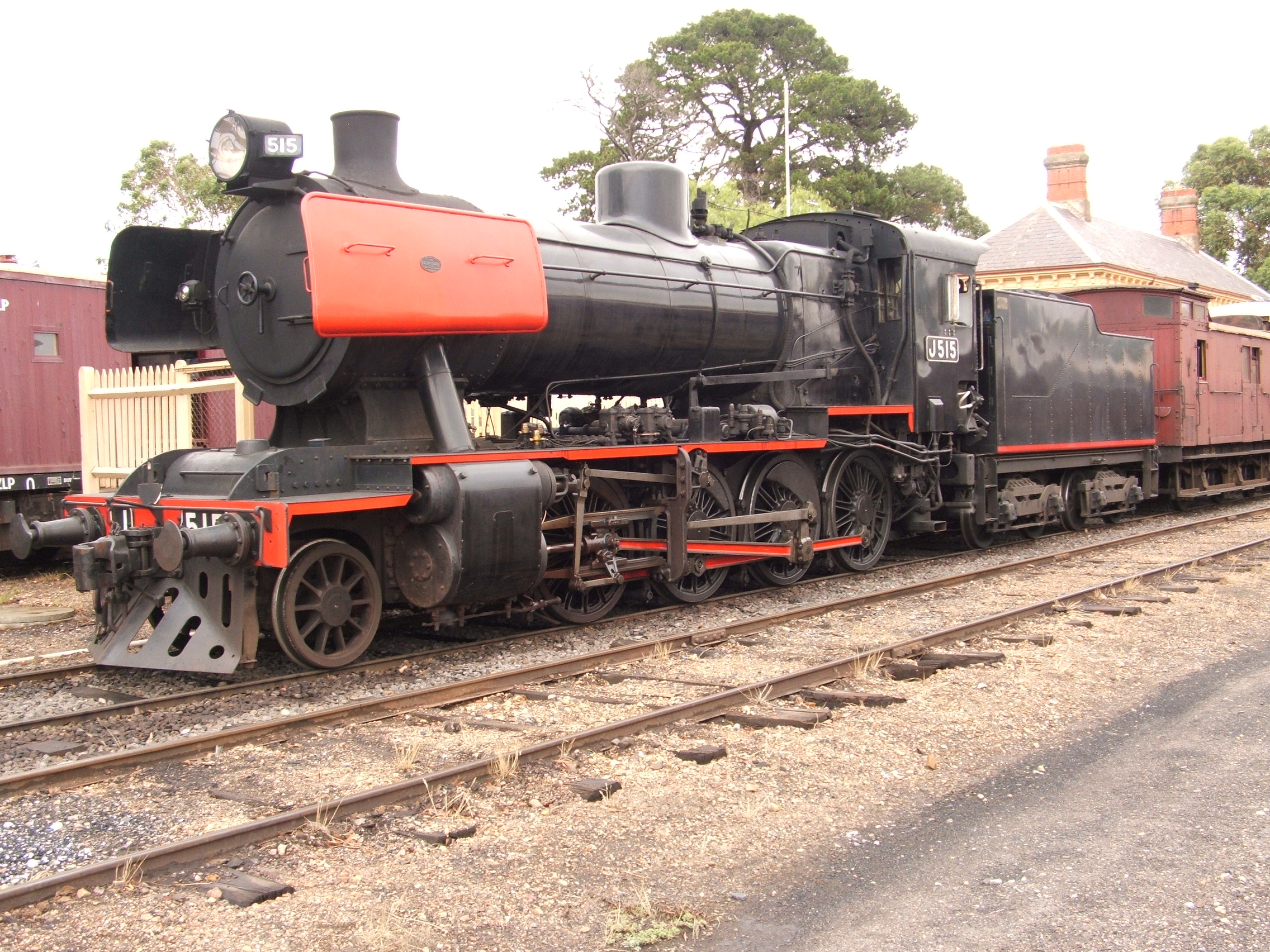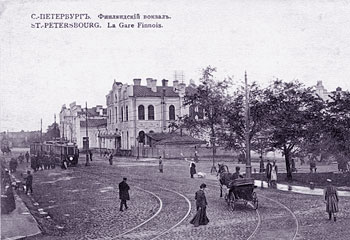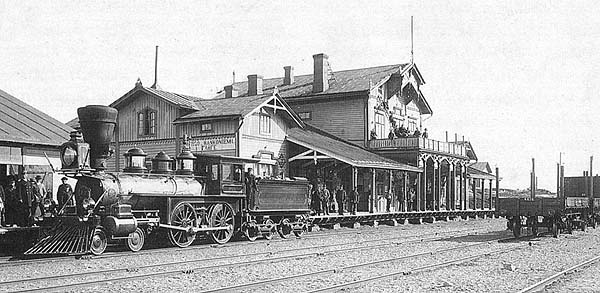|
Jokioinen Museum Railway
The Jokioinen Museum Railway is located in Jokioinen, Finland. It is located on the last operating commercial narrow gauge railway in Finland, the gauge Jokioinen Railway. The museum was established on February 2, 1978, four years after the discontinued operation of the commercially-operated railway, when the new Jokioinen Museum Railway Limited joint stock company ( fi, Jokioisten Museorautatie Oy) bought the rail line from Jokioinen to Minkiö railway station, with its land and associated buildings. Museum steam trains began running that same year. In 1994 the line was extended with an stretch between Minkiö and Humppila. The museum railway station at Humppila is beside the station of the Turku- Toijala VR line, providing a convenient access to the museum. The Minkiö station has a narrow gauge museum with a collection of carriages and locomotives. There are a number other attractions in the vicinity of the railway. Gallery File:Jokioinen railway no. 4.jpg, A 2-6 ... [...More Info...] [...Related Items...] OR: [Wikipedia] [Google] [Baidu] |
|
 |
2-8-0
Under the Whyte notation for the classification of steam locomotives, represents the wheel arrangement of two leading wheels on one axle, usually in a leading truck, eight powered and coupled driving wheels on four axles, and no trailing wheels. In the United States and elsewhere, this wheel arrangement is commonly known as a Consolidation, after the Lehigh and Mahanoy Railroad’s ''Consolidation'', the name of the first 2-8-0.White, John H. Jr. (1968). ''A history of the American locomotive; its development: 1830-1880''. New York: Dover Publications, p. 65. The notation 2-8-0T indicates a tank locomotive of this wheel arrangement, the "T" suffix indicating a locomotive on which the water is carried in side-tanks mounted on the engine rather than in an attached tender. The Consolidation represented a notable advance in locomotive power. After 1875, it became "the most popular type of freight locomotive in the United States and was built in greater quantities than any other si ... [...More Info...] [...Related Items...] OR: [Wikipedia] [Google] [Baidu] |
 |
List Of Railway Museums
A railway museum is a museum that explores the history of all aspects of rail related transportation, including: locomotives (steam, diesel, and electric), railway cars, trams, and railway signalling equipment. They may also operate historic equipment on museum grounds. Africa Egypt *Egypt's Railway Museum (Cairo) Kenya *Nairobi Railway Museum in Nairobi Nigeria * NRC/Legacy Railway Museum in Lagos Sierra Leone * Sierra Leone National Railway Museum in Freetown South Africa *Outeniqua Transport Museum in George Sudan * Railway Museum in Atbarah Zambia *Railway Museum in Livingstone Zimbabwe *Bulawayo Railway Museum in Bulawayo Asia China *Chan T'ien-yu Memorial Hall, Badaling, Beijing *China Railway Museum, Beijing * Da'anbei Railway Station, Da'an, Jilin Province *Hong Kong Railway Museum * Qingdao-Jinan Railway Museum, Jinan, Shandong Province *Shanghai Railway Museum, Shanghai *Shenyang Railway Museum, Shenyang, Liaoning Province * Wuhan Metro Museum, Wuhan ... [...More Info...] [...Related Items...] OR: [Wikipedia] [Google] [Baidu] |
|
Railway Museums In Finland
Rail transport (also known as train transport) is a means of transport that transfers passengers and goods on wheeled vehicles running on rails, which are incorporated in tracks. In contrast to road transport, where the vehicles run on a prepared flat surface, rail vehicles (rolling stock) are directionally guided by the tracks on which they run. Tracks usually consist of steel rails, installed on sleepers (ties) set in ballast, on which the rolling stock, usually fitted with metal wheels, moves. Other variations are also possible, such as "slab track", in which the rails are fastened to a concrete foundation resting on a prepared subsurface. Rolling stock in a rail transport system generally encounters lower frictional resistance than rubber-tyred road vehicles, so passenger and freight cars (carriages and wagons) can be coupled into longer trains. The operation is carried out by a railway company, providing transport between train stations or freight customer facilit ... [...More Info...] [...Related Items...] OR: [Wikipedia] [Google] [Baidu] |
|
|
Heritage Railways In Finland
Heritage may refer to: History and society * A heritage asset is a preexisting thing of value today ** Cultural heritage is created by humans ** Natural heritage is not * Heritage language Biology * Heredity, biological inheritance of physical characteristics * Kinship, the relationship between entities that share a genealogical origin Arts and media Music * ''Heritage'' (Earth, Wind & Fire album), 1990 * ''Heritage'' (Eddie Henderson album), 1976 * ''Heritage'' (Opeth album), 2011, and the title song * Heritage Records (England), a British independent record label * Heritage (song), a 1990 song by Earth, Wind & Fire Other uses in arts and media * ''Heritage'' (1935 film), a 1935 Australian film directed by Charles Chauvel * ''Heritage'' (1984 film), a 1984 Slovenian film directed by Matjaž Klopčič * ''Heritage'' (2019 film), a 2019 Cameroonian film by Yolande Welimoum * ''Heritage'' (novel), a ''Doctor Who'' novel Organizations Political parties * Heritage (Armen ... [...More Info...] [...Related Items...] OR: [Wikipedia] [Google] [Baidu] |
|
 |
Railway Lines Opened In 1978
Rail transport (also known as train transport) is a means of transport that transfers passengers and goods on wheeled vehicles running on rails, which are incorporated in tracks. In contrast to road transport, where the vehicles run on a prepared flat surface, rail vehicles (rolling stock) are directionally guided by the tracks on which they run. Tracks usually consist of steel rails, installed on sleepers (ties) set in ballast, on which the rolling stock, usually fitted with metal wheels, moves. Other variations are also possible, such as "slab track", in which the rails are fastened to a concrete foundation resting on a prepared subsurface. Rolling stock in a rail transport system generally encounters lower frictional resistance than rubber-tyred road vehicles, so passenger and freight cars (carriages and wagons) can be coupled into longer trains. The operation is carried out by a railway company, providing transport between train stations or freight customer facilit ... [...More Info...] [...Related Items...] OR: [Wikipedia] [Google] [Baidu] |
|
Railway Lines In Finland
This is a list of railway lines on the Finnish rail network, including lists of stations on the most important lines. The lines and the stations are owned by the Finnish Transport Agency. VR Group has a monopoly on passenger transport. As of 2011, it is the only operator of freight trains as well even though freight transport is open for private companies. Passenger lines Line 1: Helsinki–Turku (Rantarata/Kustbanan) Line 4: Helsinki–Pori * Helsinki Central * Pasila * Tikkurila * Riihimäki * Hämeenlinna * Toijala * Tampere * Nokia * Vammala * Kokemäki * Harjavalta * Pori Line 5: Helsinki–Vaasa * Helsinki Central * Pasila * Tikkurila * Riihimäki * Hämeenlinna * Toijala * Tampere * Parkano * Seinäjoki * Ylistaro * Isokyrö * Tervajoki * Laihia * Vaasa Line 7: Helsinki–Kemijärvi * Helsinki Central * Pasila * Tikkurila * Riihimäki * Hämeenlinna * Toijala * Tampere * Parkano * Seinäjoki * Lapua * Kauhava * Jakobstad-Pedersöre (formerly Bennäs) ... [...More Info...] [...Related Items...] OR: [Wikipedia] [Google] [Baidu] |
|
|
VR Class Hr11
The VR Class Hr11 was the first class of line-haul diesel locomotives used by Valtionrautatiet (Finnish State Railways). Only five units were built, all delivered by Valmet in 1955. The Maybach diesel engines used in the locomotives proved highly unreliable, resulting in a complete overhaul of the engine-transmission system in 1956–58, but this did not solve all of the reliability problems. The Hr11 series was withdrawn from service in 1972. History VR (Finnish Railways) started a modernization project in the early fifties. VR had a small amount of diesel and gasoline-powered railcars since the 1920s, but in 1952 VR had only steam locomotives. Modern aluminum-carriage diesel powered express multiple units (Dm3 and Dm4) were introduced in 1952. Related to these orders, VR ordered in 1952 five passenger train diesel locomotives with hydraulic transmission from Valmet Oy, Tampere. The locomotives were delivered in 1955. Technology The locomotives had originally two six-cylinder May ... [...More Info...] [...Related Items...] OR: [Wikipedia] [Google] [Baidu] |
|
|
VR Class Tk3
The Finnish VR Class Tk3 (original classification 'K5') was a 2-8-0 light freight locomotive. It was the most numerous steam locomotive class in Finland with 161 built. 100 locomotives were constructed between 1927 and 1930,Katajisto, Juhani. (1985). ''Eilispäivän kulkuneuvoja''. p. 42. Hämeenlinna:Tietoteos. . with a further 61 ordered and constructed 1943–53.Sakari K. Salo:Höyryveturikirja, They were numbered 800–899, 1100–1118, and 1129–1170. They were designed for a low axle load of just . This allowed them to operate on lightly laid secondary lines, but during their many years of service, up to the end of the steam era, they were also widely used on main lines hauling slow passenger trains that made frequent stops. They were affectionately called "Pikku-Jumbo" (The Little Jumbo) because of their good performance despite their low weight. They had a low fuel consumption (usually Tk3s used birch wood) and good riding characteristics. They also had good steaming ch ... [...More Info...] [...Related Items...] OR: [Wikipedia] [Google] [Baidu] |
|
|
VR Class Hr1
The Hr1 class (original classification P1) was the largest passenger express steam locomotive built in Finland. Twenty-two were built between the years 1937–1957. They were numbered 1000–1021. In the 1930s, there was a need for faster and heavier express trains in Finland, and the Hv1–Hv3 classes were not powerful enough to fill the need. Lokomo Oy in Tampere built first two prototypes, and after successful trials 20 more were built. Most of the locomotives were fitted with Wagner-type smoke deflectors, but the last two, which were equipped with roller bearings, had Witte-type deflectors. The class's nickname was , meaning approximately "(respected) Grandpa Pekka", after the President of Finland Pehr Evind Svinhufvud. The Hr1 was built for coal firing, but during the coal shortage after the war in 1945, birch wood was used as fuel. Larger chimneys needed for extinguishing wood sparks were temporarily fitted. The Hr1s were the most important express steam locomotive an ... [...More Info...] [...Related Items...] OR: [Wikipedia] [Google] [Baidu] |
|
|
VR Class Pr1
VR Class Pr1 (original classification N1, nickname ''Paikku'', from Finnish “paikallinen”, local) was a tank steam locomotive for local passenger services of Finnish railways. Ordering and delivery In the 1920s, VR was concerned about the low power and speed of their existing class Vk1-3 class locomotives that were used in local services, especially on the Helsinki commuter rail services. A decision was reached to order a new and powerful, by standards of that time, local traffic locomotive from Hanomag with the intention of licence manufacture of more units by Finnish locomotive works. At the same time, a shunting locomotive based on a similar design, Vr3, was also ordered. The classes share many parts, including as frames, boilers and spaces for coal, but wheel arrangement, domes and top speed are very different because of their completely different roles. The locomotive was of tank design with small coal bunker in the rear, which limited operational range. The first ba ... [...More Info...] [...Related Items...] OR: [Wikipedia] [Google] [Baidu] |
|
 |
History Of Rail Transport In Finland
:''This article is part of the history of rail transport by country series'' The history of rail transport in Finland began on January 31, 1862, with the opening of the railway line between Helsinki and Hämeenlinna. By 1900 most of the future main lines had been constructed, including the line to St. Petersburg.4rail.net - Reference - Finland - Railway History ''4rail.net'' By the time of the birth of the new Finnish Republic in 1917 lines connected all major cities, major ports, and reached as far as the Swedish border, and inner Finland as far north as Kontiomäki in Paltamo region, as well as eastwards into Karelia. Rail ...
|
 |
Hanko–Hyvinkää Railway
The Hanko–Hyvinkää Railroad, 1872–1875 ( sv, Hangö–Hyvinge järnväg), was Finland's first privately funded railway. Hanko is the southernmost town in Finland. Hanko has a seaport which, thanks to its location, can be used for the longest possible time during the sometimes very severe, and freezing, Finnish winters. Because all the other Finnish seaports might be frozen solid during the winter, there was an anticipation for a large amount freight transit traffic. As such, a decision was made to privately fund the railway from Hanko to the Finnish State Railways' Helsinki–Hämeenlinna line, with the connection at Hyvinkää. Work on the new railway began in 1872 with the inaugural run being on October 8, 1873. Owing to insufficient funds, the private company soon got into financial trouble. Facing almost certain liquidation, the railroad company was sold to the Finnish State Railways in 1875. Today, the Finnish Railway Museum is based at the site of the original ... [...More Info...] [...Related Items...] OR: [Wikipedia] [Google] [Baidu] |